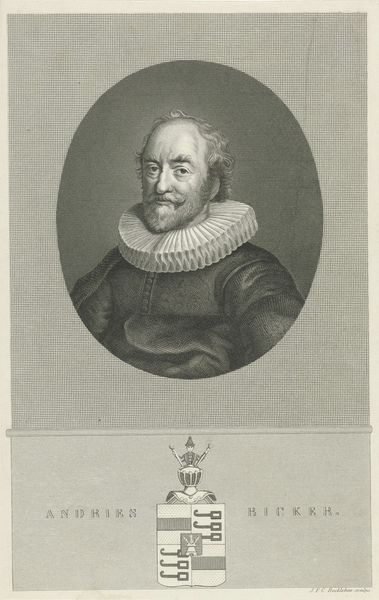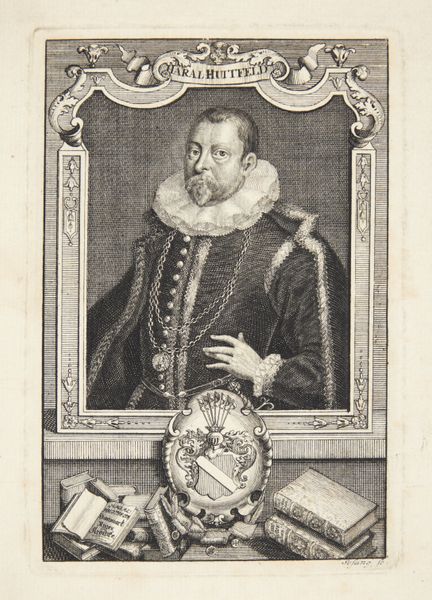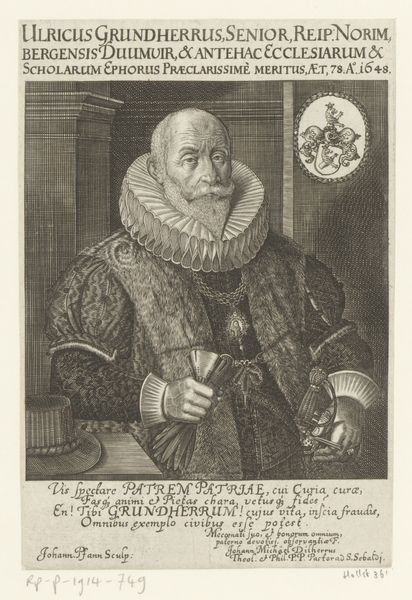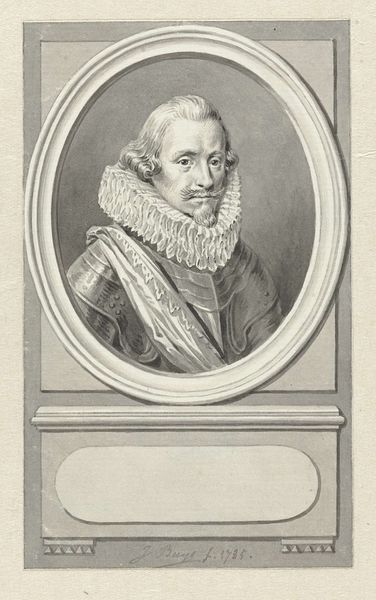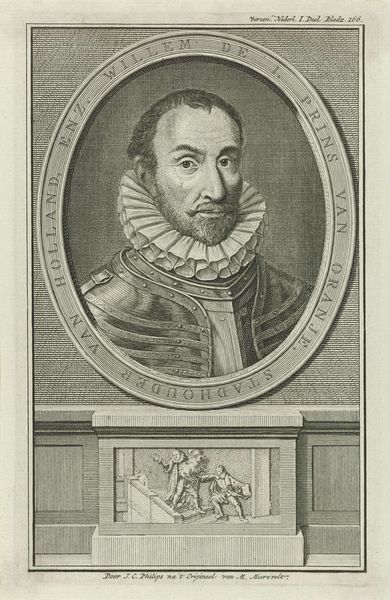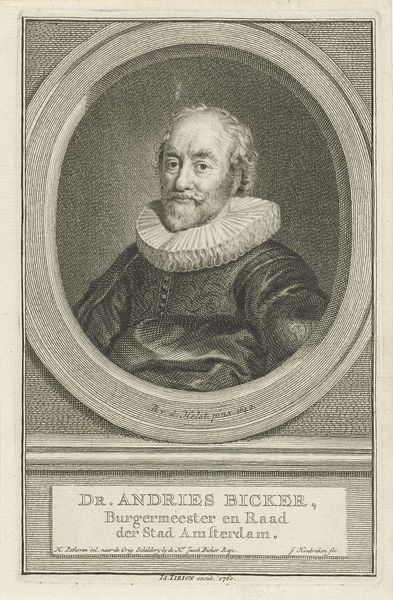
#
charcoal drawing
#
charcoal art
#
portrait reference
#
unrealistic statue
#
pencil drawing
#
framed image
#
surrealism
#
portrait drawing
#
pencil art
#
statue
Dimensions: height 312 mm, width 220 mm
Copyright: Rijks Museum: Open Domain
Gerard Valck created this portrait of Johann Adolph Bornemann, likely as an engraving, sometime around the turn of the 18th century in the Netherlands. As a pastor and prominent figure, Bornemann's status is visually communicated through specific cultural codes. The elaborate ruff, the formal attire, and the Latin inscription all speak to his education, social standing, and connection to religious institutions. The portrait itself, framed by draped fabric, mimics classical forms which were often used to elevate the status of the subject and convey power. We can interpret this image through a rich social history. By researching the role of the church in 17th and 18th century Dutch society, as well as the function of portraiture as a tool for constructing identity, we can gain a deeper understanding of the world in which both artist and sitter operated. Analyzing such visual and textual cues, along with knowledge of institutional and political contexts, can reveal the complex interplay between art, power, and social structures.
Comments
No comments
Be the first to comment and join the conversation on the ultimate creative platform.
